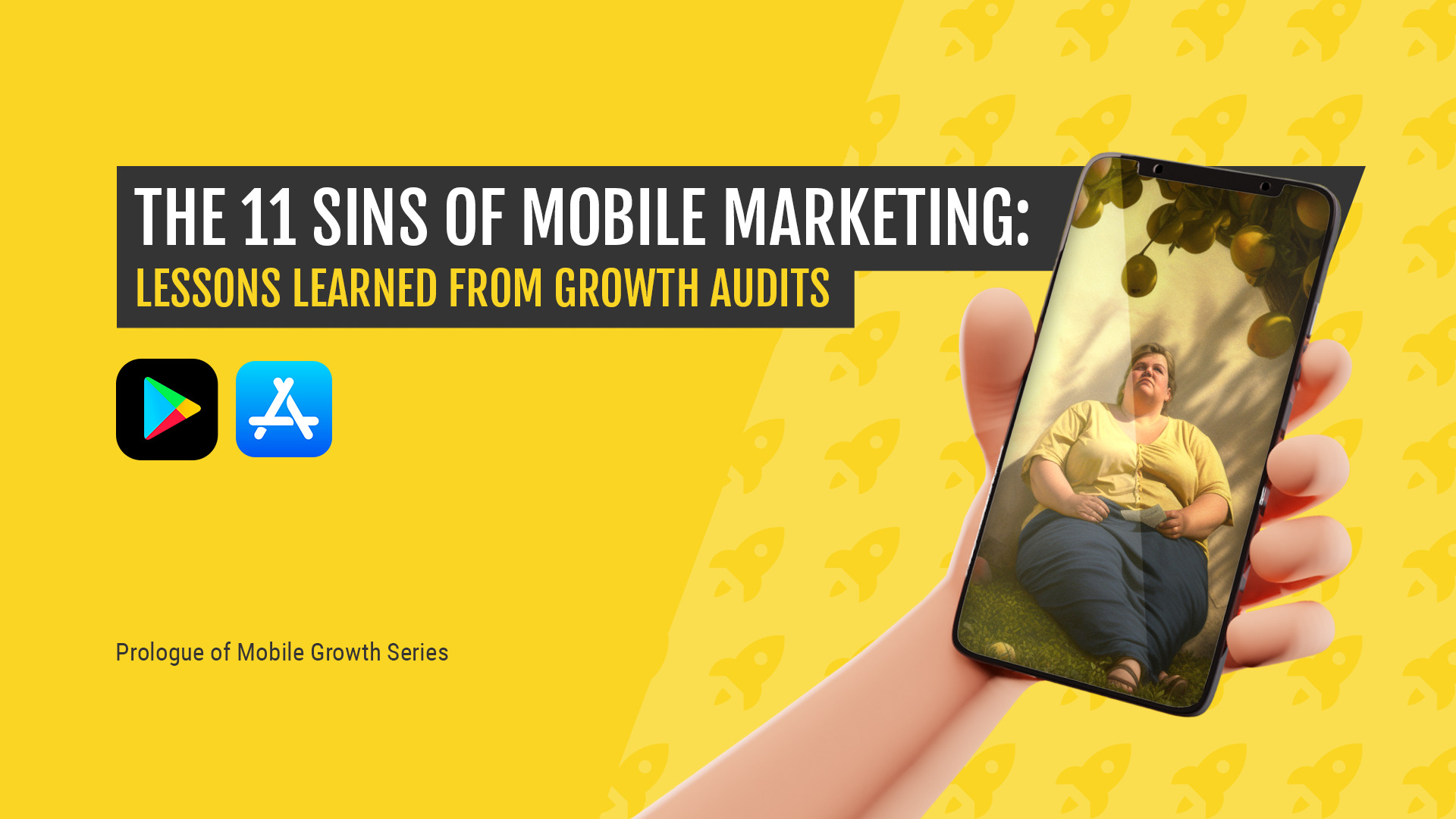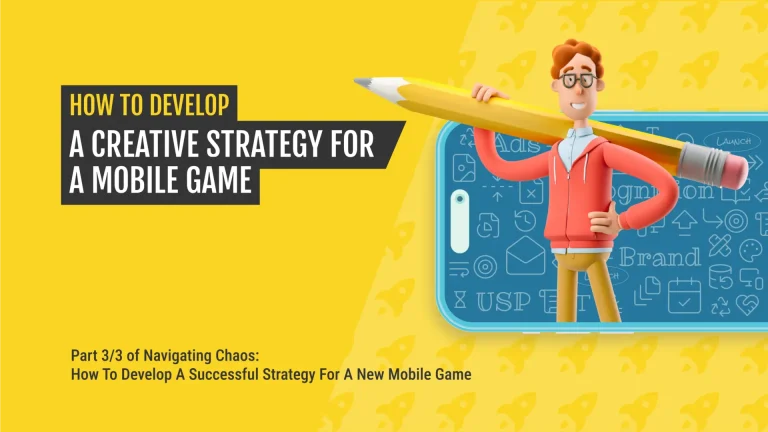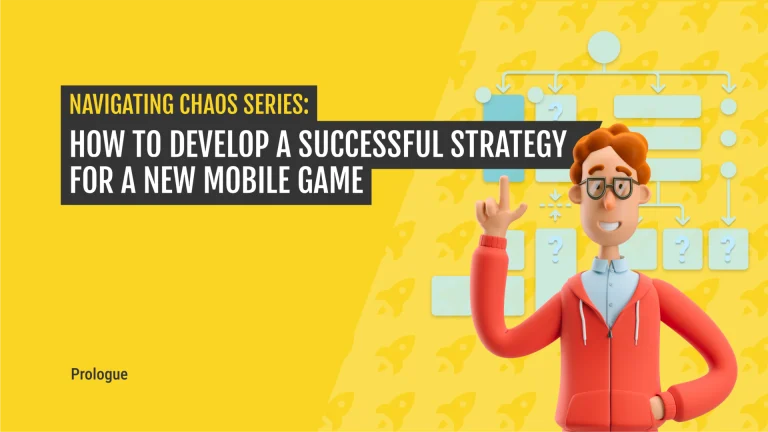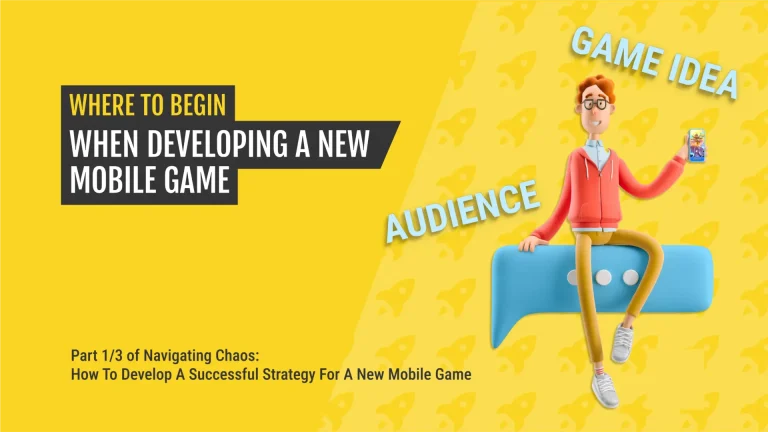This is the Prologue of the Mobile Growth Series, which aims to help you take your app to the next level. In each episode, we will provide insights into topics related to data, product optimization, and growth strategy. Subscribe to our newsletter to stay updated about future episodes.
As the mobile app industry evolves, many companies struggle to keep up with the latest trends and adapt through effective strategies. As a solution, mobile growth audits have become an increasingly popular method for identifying gaps in businesses’ growth plans and unlocking their maximum scalability potential.
In this article, we will present 11 key learnings we’ve gained from conducting over 20 mobile growth audits at AppAgent. Each learning sheds light on some of the major challenges businesses face–consider it your sanity check for assessing the performance of your mobile app or game!
The 11 Sins of Mobile Marketing
- The Struggle with iOS Evaluation and SKAN
- The Lack of a Clear UA Creative Testing Methodology
- Failure to Take Advantage of Pricing Optimization & Discount Flow
- The Problem of Continuous Growth Prioritization
- The Lack of Methodology to Predict User LTVs
- The Lack of a Proper ASO Methodology
- The Lack of Understanding of User Behavior
- The Absence of an “Integrated” Growth Model
- The Use of Only a Basic Prediction Event
- Failure to Reap the App Store’s Low-Hanging Fruit
- Brand Keeps Creative Testing Stuck in the Mud
1. The Struggle with iOS Evaluation and SKAN
User acquisition on iOS is cordially tied to ATT; however, teams almost always lack a complete understanding of its intricacies, limitations, and how to effectively incorporate it into their specific use cases.
To address this, businesses should:
- Know their enemy well. There are a lot of resources out there to read and study, so delegate one team member to fully grasp the concept and understand its limitations to the best of their ability.
- Make sure they choose the right approach for their use case. Options include evaluating blended traffic for initial tests, using Custom Product Pages for CPI campaign evaluation, leveraging MMPs’ integrated solution, or focusing on incremental measurements with significant investments.
2. The Lack of a Clear UA Creative Testing Methodology
I’m sure we can all agree that it’s tough to find new ad creatives that outperform previous “winners”. It can often feel like a game of luck, but examples from companies like Playrix show that there can be a method to the madness.
In reality, we still come across teams that lack a proper methodology for testing creatives. Even when teams do have a methodology in place, they often fail to follow up on the results. There is a lack of effort to dissect the findings of creative testing, and the learnings are typically limited to simplistic conclusions of “works” or “does not work,” without delving into the reasons why. It’s not difficult to understand that in such an environment, learning and improvement become practically impossible.
To address this, businesses should:
- Establish a reliable creative testing methodology. Having a strong foundation for testing builds trust in the results and reinforces the belief that an iterative approach can produce favorable outcomes.
- Implement a robust process that begins with a creative strategy and a plan of creative directions to be tested. This process should be regularly refined based on the results obtained and ongoing research on competitors.
- Introduce creative deconstructions by conducting regular meetings, whether weekly or monthly, where UA managers and the creative team collaborate. These sessions should involve discussions, documentation of learnings, and planning for future iterations.
Pro Tip: Enhance your creative testing approach with the new Creative Testing Guide. This comprehensive resource is the result of years of experience and insights gathered from UA managers at renowned companies like Scopely, Miniclip, Applovin, Small Giant Games, Pixel Federation, and many others.
3. Failure to Take Advantage of Pricing Optimization & Discount Flow
The fundamentals of Customer Relationship Management (CRM) are often overlooked or neglected altogether.
While CRM can be a complex realm with endless possibilities for personalization and intricate workflows, sometimes even the basic elements are not executed effectively. Essential components like “discount flows,” “win-back scenarios,” or simple yet impactful in-app and push messages are frequently missed. Implementing these elements properly can have a substantial positive impact on revenue and customer retention.
To address this, businesses should:
- Prioritize the essentials. Even simple actions can yield significant results. Take action now and make use of the tools available to you, even if they are basic.
- Measure the impact. Before implementing any changes, ensure that you have a clear understanding of the potential effects they may have.
- Explore available options. Keep an eye out for new tools like Assetario, which can dynamically suggest personalized discounts to users who are less likely to pay the full price, and adjust prices for those who show potential to pay more. These straightforward tactics can generate additional revenue of 20% or more, all without the need for SDK integration.
Pro Tip: It’s important not to overlook elements like personalization in your communication strategy. Neglecting personalization can lead to generic messaging that feels disconnected from the user’s experience.
4. The Problem of Continuous Growth Prioritization
We frequently see teams focus on implementing tactics and features that only have a chance to provide small improvements. Meanwhile, they’re overlooking bigger opportunities that are emerging.
For example, imagine the amazing performance of UGC ads when they first started trending, or the value of jumping into a new user acquisition (UA) channel at the right time.
With the landscape changing as fast as it does and given the cutthroat competition, it’s essential to adopt new tactics as early as possible in order to reap the greatest benefits. But even if you know what to do, actually doing it requires the ability to quickly reroute the ship. This will naturally disrupt already running initiatives and may cause A LOT of friction.
Smaller teams are usually limited in this aspect by a lack of time and expertise (it’s important to have your pulse on the industry, but have fun doing that with a task list that’s two pages long!).
On the other hand, larger teams often fall victim to the “stop the tanker” syndrome*, where changing direction becomes a slow and arduous process due to the attachment from the dedicated owners of various initiatives.
*The braking distance of an oil tanker can be as much as 10 km.
To address this, businesses should:
- Establish robust growth models to understand the possible impact of each initiative on the business. When the potential effects are known, it becomes easier to prioritize and align the team toward implementing necessary changes.
- Implement a system to regularly check and reprioritize the Growth Backlog.
- Consider an external health check from time to time.
5. The Lack of Methodology to Predict User LTVs
Despite the fact that everyone (now even your Grandma) knows that Customer Lifetime Value (cLTV) is an essential element of any sensible marketing operation, calculating and predicting this metric properly is still a challenge for many.
Teams are aware that Lifetime Value (LTV) and cLTV greatly differ from segment to segment, but we rarely see proper long-term curves with relevant breakdowns (platform, country, channel, subscription type) that can be observed in different timeframes for proper backcheck and analysis.
Shaky methodology leads to inaccurate predictions and bad decisions–fix it!
To address this, businesses should:
- Always break down LTV and cLTV by platform, country, UA channel, and timeframe.
- Invest in implementing a robust system that utilizes raw subscription data and enables additional analysis and enhanced accuracy.
6. The Lack of a Proper ASO Methodology
Although very few companies neglect ASO (if anything, many tend to overinvest in it), we often observe a lack of a systematic approach. Instead of employing a proper methodology that enables continuous improvement of results, they resort to a “throw spaghetti at the wall and see what sticks” approach.
This holds especially true for Conversion Rate Optimization (CRO), as many marketers lack a proper understanding of how to approach it. As a result, they often end up wasting time and resources testing insignificant changes that are nearly impossible to measure in terms of their impact.
To address this, businesses should:
- Appoint an ASO manager who possesses a comprehensive understanding of testing and evaluation methodologies, including sample size determination, frequentist, and Bayesian evaluations.
- Calculate the business value associated with potential CRO uplifts before they hire an agency and potentially waste their budget.
- Adopt a recurring framework and develop a long-term plan. Several frameworks are available, each of which significantly surpasses having no framework at all.
Pro Tip: As with every tool and tactic, there’s a time and place for everything. In my eyes, this is especially true with ASO.
7. The Lack of Understanding of User Behavior
Every product manager should aim for easy access to in-app insights and user behavior. This goes beyond implementing a good analytics tool—it requires a solid understanding of how to implement analytics effectively, including defining metrics and events accurately.
However, some businesses still:
- Lack an adequate tracking architecture for product data. Sometimes, documentation remains accessible only to developers, the metric names are misleading and not fully understood by the product team, or there are tools that only provide super basic insights.
- Lack definitions of the key questions to ask and metrics to answer them. Surprisingly often, we get asked to help define these by people that are actually planning the growth priorities and should know the product by heart.
It’s no surprise that gaps in these areas quickly lead to skewed insights, ambiguity, and guesswork, and if feels like there’s clear causation between “data competencies” and “success”.
To address this, businesses should:
- Ensure the utilization of proper analytics documentation that is accessible to the entire product and marketing teams.
- Less experienced organizations should assign an “insights architect” who acts as a bridge between the data team and the product and marketing teams. Such a person helps the product/marketing teams define, outline and specify their data requirements, translates them into a more technical language, and makes sure all is implemented with functional UX.
- Calculate the business value associated with potential CRO uplifts before they hire an agency and potentially waste their budget.
- Adopt a recurring framework and develop a long-term plan. Several frameworks are available, each of which significantly surpasses having no framework at all.
8. The Absence of an “Integrated” Growth Model
Do you have a system that allows you to simply answer questions like:
- “What would be the revenue impact if we increase the store conversion rate by 5 percentage points?”
- “If the CPM dropped from 15 to 7, would we break even before D90?”
- “If we adjusted our subscription offerings and shifted 50% of users from Monthly to Yearly, would we save enough cash to triple our UA budget when the high season begins?”
If you don’t have such a system, don’t worry, you’re not alone.
While there may be a few exceptions, we rarely come across a company that has a properly integrated Growth Model. Such a model would enable individuals to understand the funnel metrics in context and comprehend how certain growth drivers impact overall performance.
Teams often work with disconnected components of a Growth Model, where each initiative has its own set of KPIs (i.e. Increase the store conversion rate by 5 percentage points). Without the full context, these KPIs tend to dominate the focus of their owners, restricting their perspective and occasionally leading to a limited (and sometimes incorrect) interpretation of success.
On the other hand, being able to understand and model various what-if scenarios throughout the whole funnel (ASO, paid UA, Monetization) greatly empowers teams to prioritize what truly matters–and this is not too difficult to do.
To address this, businesses should:
- Can model different “what-if” scenarios to assess the impact of metrics on crucial KPIs (revenue, margin, cLTV, payback curves, cash flow).
- Allows teams to understand the entire UA funnel in context, as well as the level of their potential influence.
Pro Tip: Given the current situation where interest rates are at their (likely) mid-term peak and a notable decline in VC funding, many companies will rely solely on their own revenue to support paid UA. Therefore, it is crucial, now more than ever, to prioritize modeling, understanding, and effectively managing cash flow.
9. The Use of Only A Basic Prediction Event
Although the basic rules for selecting an optimization event are well known and used by just about everyone (the event has to happen frequently enough, and fairly soon after the first launch), the focus tends to end there.
Despite the fact that such an event provides a critically important signal to the optimization algorithm, not much attention is given to its definition and testing.
To address this, businesses should:
- Consider more events. Two different products can attract very different audiences (think significantly different price tiers). Optimizing for just a single event (i.e. a purchase) will average these out and thus greatly dilute the power of optimization.
Enrich “basic” events with engagement factors. For example, not all trials are created equal, as most users tend to “die off” after the first session. You might prefer to optimize for a Trial with at least three sessions on day 0, as that can serve as a much stronger indicator of potential future purchases.
The clear advice here is to move beyond the basics and unleash a data analyst to perform a deeper review of user segments and correlations between their behaviors. Don’t be afraid to test and experiment!
10. Failure to Reap the App Store’s Low-Hanging Fruit
The three most accessible and effective activities, commonly referred to as “low-hanging fruit,” include localization, addressing reviews, and leveraging the simple yet powerful “Mexican Hack” to exponentially increase indexed keywords.
To address this, businesses should:
- Localize their store listings. This simple and labor-efficient task can yield significant improvements in conversion rate (CVR), consequently boosting rankings and downloads in specific countries.
- Reply to reviews. This is a great opportunity to utilize brand language!
- Implement the “Mexican Hack” strategy. Interestingly, Mexican localization is indexed by the US App Store as well. Unless you have a substantial presence in Mexico, leveraging the Mexican localization can be a clever tactic to add more English keywords and ensure their indexing.
Pro Tip: Both activities can be greatly simplified by using AI tools like ChatGPT. Appfollow, for example, has already implemented auto-responses in their UI–now you don’t even have to leave the ASO tool’s interface to address positive and negative reviews in both app stores.
11. Brand Keeps Creative Testing Stuck in the Mud
The eternal struggle between performance and brand appears to be as ancient as the battle between good and evil. However, like all things, achieving a balance is essential.
Attempting to ensure that every ad being tested aligns perfectly with every brand-related detail is an enormous undertaking that consumes significant time and effort. From our experience, we find this task to be mostly futile, yet regrettably common.
To address this, businesses should:
- Test first, stress second. By allocating a small budget, you can test out ideas without the need to be overly concerned about the brand aspect since exposure is typically limited. Only when the ideas prove to be successful, you can circle back and allow the brand team to fine-tune them.
Pro Tip: Another common mistake is being too slow to adapt. Failing to keep up with emerging trends, such as UGC (User-Generated Content) ads, can result in missing the prime opportunity. Delaying implementation can cause these strategies to lose their novelty and effectiveness. Speed, at times, serves as a crucial distinguishing factor.
Final Thoughts
After reflecting on the audits we’ve done in the past year on a variety of apps in different verticals, it’s been pretty clear that despite no two of them being alike, there are some definite patterns and overlaps.
It’s been also interesting to see not only what the main challenges and “sins” are at this moment, but also how they did (not) change over time. Despite arguably the biggest and wide-spread one being fairly new (SKAD), most of the others have been around since the dawn of the app stores.
This shows that despite many of the growth paths being already travelled and most of the knowledge being available online, there are still often gaps within the fundamentals.
And what about you? What are your sins, and did you find them on our list? Let us know!
If you’re seeking assistance with improving your app or game’s performance, please feel free to reach out to me directly at martinjelinek@appagent.com for a free consultation.
















